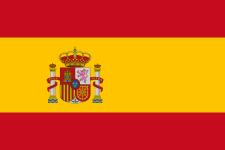2019 Queen's Club Championships
The 2019 Queen's Club Championships (also known as the Fever-Tree Championships for sponsorship reasons) was a tennis tournament played on outdoor grass courts. It was the 117th edition of the event and part of the ATP World Tour 500 series of the 2019 ATP Tour. It took place at the Queen's Club in London, United Kingdom from 17 to 23 June.[1]
| 2019 Queen's Club Championships | |
|---|---|
| Date | 17 – 23 June |
| Edition | 117th |
| Category | ATP World Tour 500 series |
| Draw | 32S / 16D |
| Prize money | €1,836,660 |
| Surface | Grass |
| Location | London, United Kingdom |
| Venue | Queen's Club |
| Champions | |
| Singles | |
| Doubles | |
| Wheelchair Singles | |
| Wheelchair Doubles | |
Points and prize money
Point distribution
| Event | W | F | SF | QF | Round of 16 | Round of 32 | Q | Q2 | Q1 |
| Singles | 500 | 300 | 180 | 90 | 45 | 0 | 20 | 10 | 0 |
|---|---|---|---|---|---|---|---|---|---|
| Doubles | 0 | N/A | 45 | 25 | 0 |
Prize money
| Event | W | F | SF | QF | Round of 16 | Round of 32 | Q | Q2 | Q1 |
| Singles | €427,590 | €209,630 | €105,480 | €53,645 | €27,860 | €14,690 | €0 | €3,250 | €1,660 |
| Doubles* | €128,740 | €63,030 | €31,620 | €16,230 | €8,390 | N/A | N/A | N/A | N/A |
*per team
ATP singles main draw entrants
Seeds
| Country | Player | Rank1 | Seed |
|---|---|---|---|
| Stefanos Tsitsipas | 6 | 1 | |
| Kevin Anderson | 8 | 2 | |
| Juan Martín del Potro | 12 | 3 | |
| Daniil Medvedev | 13 | 4 | |
| Marin Čilić | 15 | 5 | |
| Milos Raonic | 18 | 6 | |
| Stan Wawrinka | 19 | 7 | |
| Félix Auger-Aliassime | 21 | 8 |
- 1 Rankings are as of June 10, 2019.
Other entrants
The following players received wildcards into the main draw:
The following player received entry as a special exempt:
The following players received entry from the qualifying draw:
The following player received entry as a lucky loser:
Withdrawals
- Before the tournament


- During the tournament
ATP doubles main draw entrants
Seeds
| Country | Player | Country | Player | Rank1 | Seed |
|---|---|---|---|---|---|
| Juan Sebastián Cabal | Robert Farah | 10 | 1 | ||
| Mate Pavić | Bruno Soares | 23 | 2 | ||
| Henri Kontinen | John Peers | 32 | 3 | ||
| Bob Bryan | Mike Bryan | 37 | 4 |
- 1 Rankings are as of June 10, 2019.
Other entrants
The following pairs received wildcards into the doubles main draw:
The following pair received entry from the qualifying draw:
The following pair received entry as lucky losers:
Champions
Singles


Doubles




Wheelchair Singles


Wheelchair Doubles
.svg.png)


